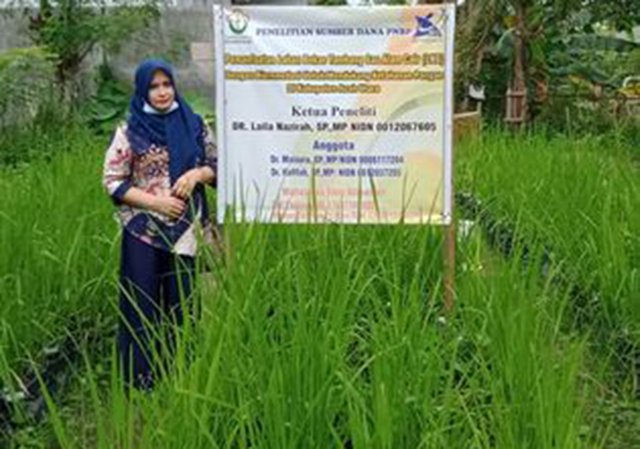High Paddy Production Target Amidst Decreasing Land, This is the Solution from Unimal Academics |

The Aceh Government, Indonesia, is targeting paddy production in 2025 to reach 1.6 million tons or higher than the previous year, which was 1.4 million tons. This target places Aceh in 8th place in the national food barn.
Amidst the increasing production target, the area of agricultural land continues to shrink in 22 of the 23 districts and cities in Aceh. The only area that is free from land shrinkage is Sabang City because the area does not have a rice field area.
This condition is considered as one of the obstacles to achieving the target of paddy production to support national food self-sufficiency. In addition, the symptoms of shrinking agricultural land due to conversion or not being cultivated must be seriously anticipated by the Aceh Government because it has a broad impact on economic and social stability.
"The reduction in rice fields is a major threat to future food self-sufficiency. If not handled with the right policies and serious implementation, Aceh will face economic and social instability," said agricultural observer from Malikussaleh University, Dr. Laila Nazirah, Tuesday, April 15, 2025.
According to her, land shrinkage will have an impact on food independence and Indonesia, including Aceh, because it cannot be separated from imports.
"The direct impact of the conversion of productive rice fields is the decline in the amount of rice production. Rice is the main commodity in food self-sufficiency in Indonesia. The less fertile land available, the lower the rice production. This will clearly affect food security and self-sufficiency," continued Laila.
When asked whether the target of food self-sufficiency is still realistic to achieve in the current limited land conditions, Laila Nazirah reminded the Aceh Government not to stop trying. The government is expected to raise awareness among farmers and all sectors to optimize production results.
Meanwhile, opening new rice fields takes a long time to become productive rice fields. In addition, cooperation between the government, farming communities and the private sector is needed to protect and maintain agricultural land, especially productive rice fields.

"If we collaborate, the target of sustainable food security will be maintained," continued the lecturer who has done a lot of research on local rice varieties.
She reminded of Law Number 41 of 2009 concerning the Protection of Sustainable Food Crop Land. "The existence of this regulation requires cooperation from all parties to implement it in the field," explained Laila, who hopes that the government will firmly suppress the conversion of productive land.
According to Laila, rapid efforts to achieve the target of food self-sufficiency in the midst of the above conditions require an intensification program by optimizing the remaining land with the use of superior seeds that have the potential for high production, are resistant to abiotic and biotic environmental conditions.
Then the application of modern technology such as precision agriculture, drones, and drip irrigation can also be done, as well as balanced fertilization and the provision of organic fertilizers. "Finally, the intensive planting pattern is planting three times a year," she explained.
In addition to land conversion, the rate of population growth is also a cause of the shrinking of rice fields. The population growth rate for the period 2020-2024 averages 1.3 percent per year (BPS, 2025). This greatly affects the need for land to support people's lives.
"The need for land for residential and office areas usually requires a sufficient area. As a result, agricultural land is the victim," concluded Laila Nazirah.[]


Jroh Adoen...
Alhamdulillah, Saleum Kanda @hoesniy....